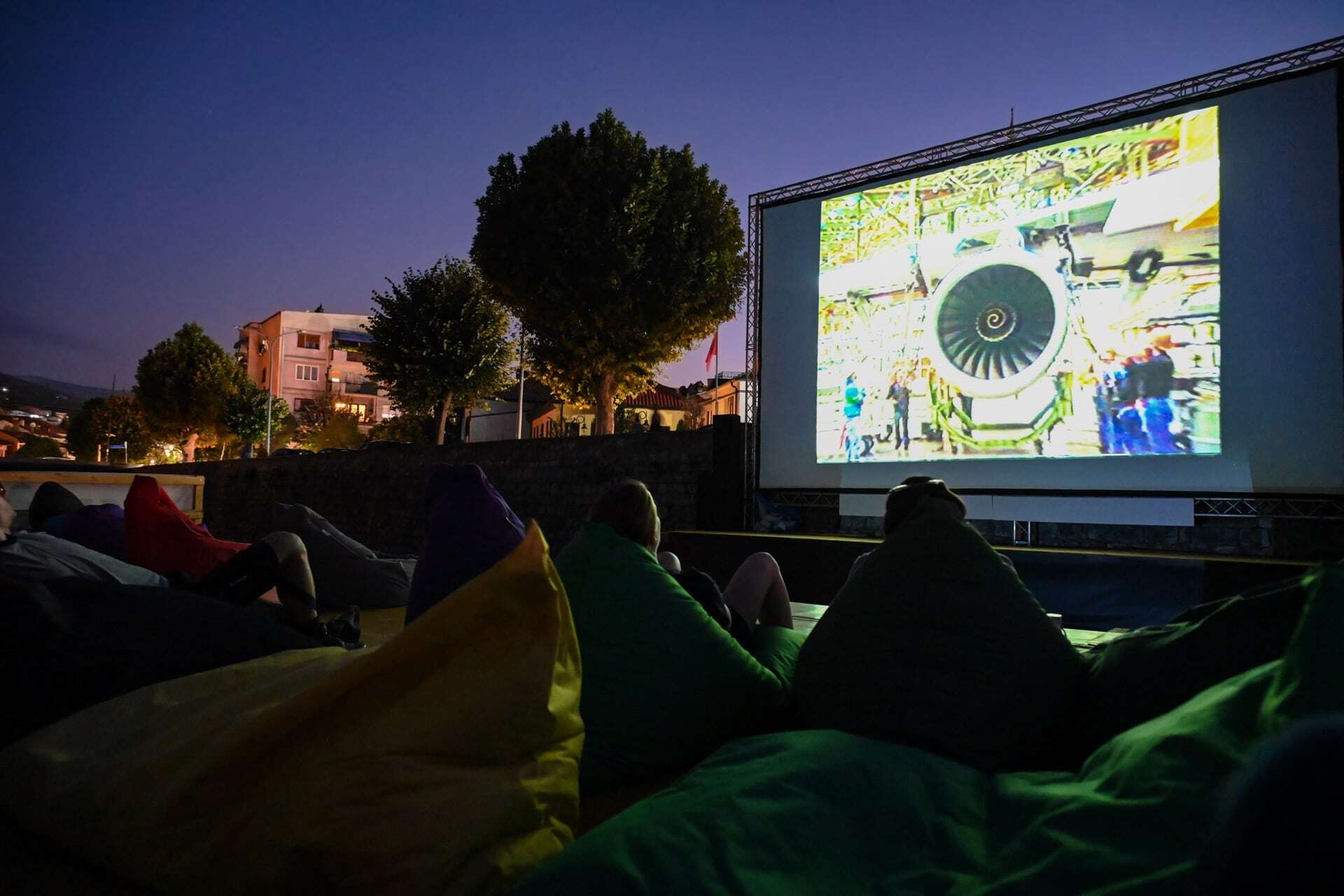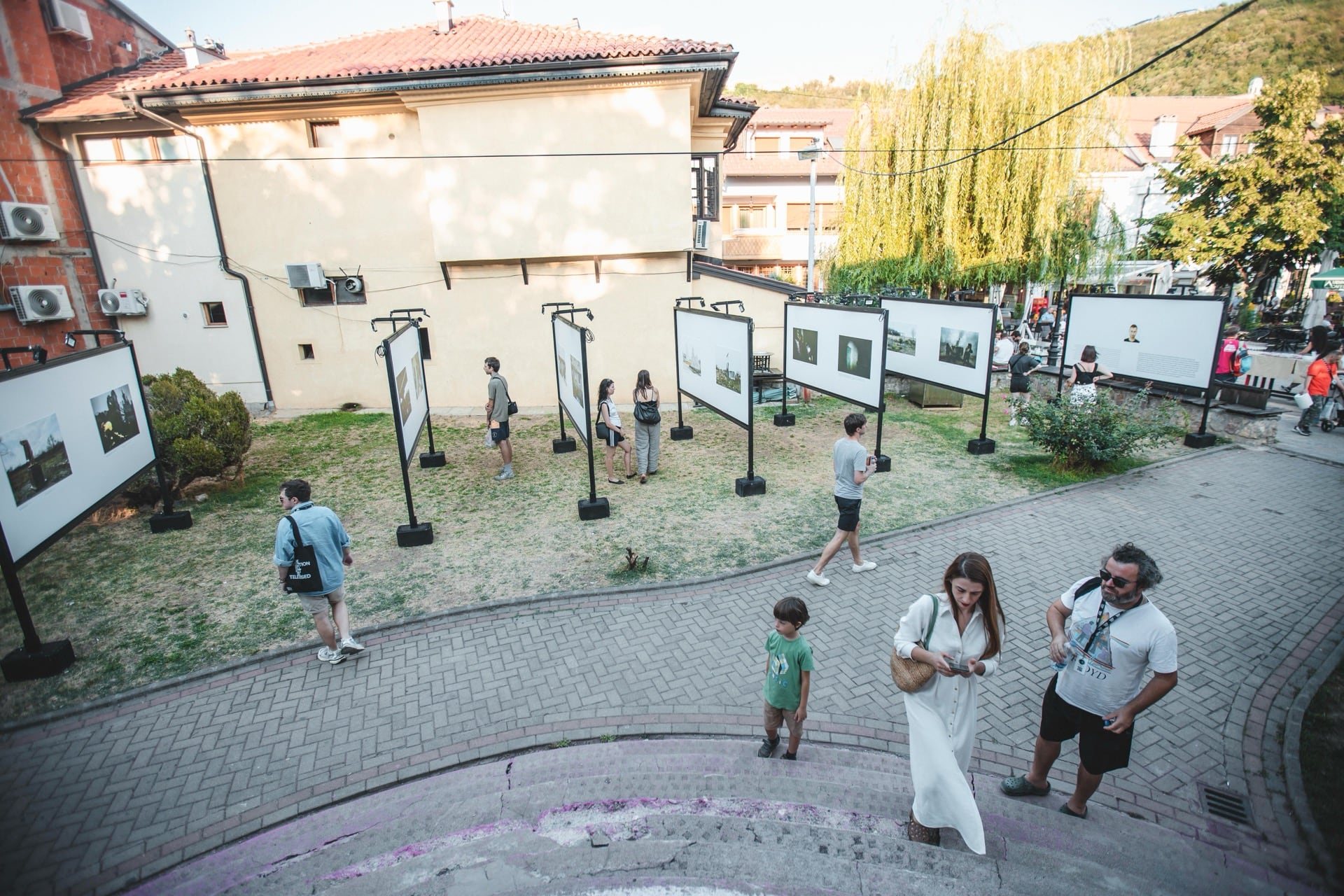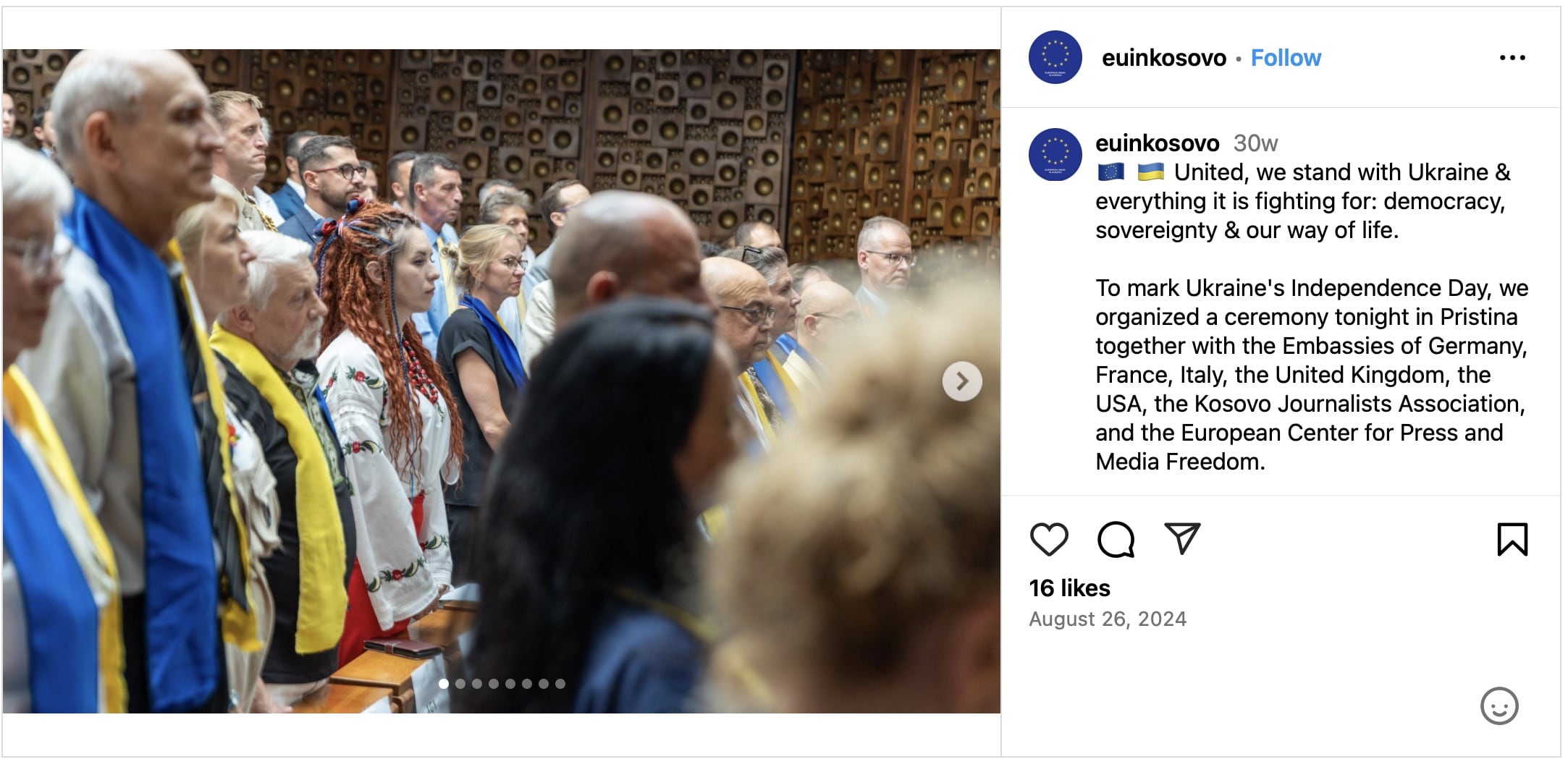ZMINA: Rebuilding - DokuFest and Docudays Connect Kosovo and Ukraine

Creators from two war-affected countries showcased their art at the DokuFest festival. Documentaries and photographs became a voice for powerful stories of resilience, justice, and remembrance. We spoke with organiser Eroll Bilibani about the Focus Ukraine project.
Why did you decide to establish a collaboration between DokuFest and Docudays? How did this partnership come about?
The collaboration between DokuFest and Docudays was driven by a shared commitment to using cinema as a means of fostering dialogue, resilience, and justice. Both festivals prioritise human rights, documentary storytelling, and cultural diplomacy, making this partnership a natural fit. The idea came about through long-standing connections between DokuFest and international film networks, as well as an understanding that Ukrainian stories needed a prominent space in global conversations. The ongoing war in Ukraine made it even more urgent to highlight these narratives, and Docudays, with its deep knowledge of Ukrainian documentary cinema, was the ideal partner.
What was the inspiration behind creating the Focus Ukraine section?
The inspiration came from the understanding that storytelling is a powerful tool for resistance, documentation, and healing. Ukraine is undergoing an existential crisis, and its filmmakers, photographers, and artists are playing a crucial role in preserving history and shaping future narratives. At the same time, Kosovo has its own experience with war and reconstruction, making the connection between the two countries meaningful. The Focus Ukraine section was designed to give Ukrainian voices a platform, raise awareness, and create a space where art can serve as a bridge between different communities facing similar struggles.
__resized.jpg)
Could you tell us more about the selection process for the photographers, filmmakers, and their works?
The selection process was guided by artistic excellence, thematic relevance, and the urgency of the stories being told. We worked closely with Docudays to identify films and photographs that not only documented the war but also explored resilience, survival, and human connections. The selection also had to reflect a diversity of perspectives—ranging from investigative pieces to deeply personal narratives. In photography, we sought works that captured the immediacy of the conflict while offering a more reflective, emotional insight into life in war zones.
What themes did you prioritize during the selection process?
The key themes we prioritized were:
War and Resistance – Stories capturing the harsh realities of war, including war crimes documentation and personal accounts of survival.
Memory and Justice – Works that explore historical narratives, the role of archives, and transitional justice.
Resilience and Everyday Life – Films and photographs that highlight how people continue living, creating, and fighting for normalcy despite the conflict.
Displacement and Identity – Exploring how war affects identity, migration, and the sense of belonging.
Can you share more details about the works that ultimately made it to the festival?
The film programme featured a powerful mix of investigative documentaries, personal stories, and artistic reflections. One work examined intercepted phone calls, offering a raw insight into the psychological aspects of war. Another followed the journey of a woman transporting fallen soldiers back to their families. There were also intergenerational stories about families adapting to new realities. On the photography side, the exhibition UA_24022022.JPG included deeply intimate images of war-torn landscapes and everyday resilience, capturing both destruction and hope.

Did you encounter any logistical challenges or obstacles during the transportation of the works?
Yes, there were several challenges. Due to the ongoing war, transporting physical works, particularly photographs and exhibition materials, was complicated. Some contributors had to send digital files, which we printed locally, while others faced difficulties obtaining the necessary travel permissions. Additionally, ensuring the safe arrival of materials, considering power shortages and infrastructure limitations in Ukraine, required extra coordination. However, with close communication, timely digital file transfer and problem-solving, all digital material arrived in time for local printing and curation.
Which theme or work presented at the festival resonated with you the most?
One of the most powerful themes was the role of memory in justice. The discussion on war archives highlighted the essential role of documentation in ensuring accountability. The commitment of Ukrainian archivists to preserving evidence of war crimes was deeply moving, and their work resonates with Kosovo’s own experience of documenting the past for future justice.
How was the communication with Ukrainian partners during the event's preparation? Was there anything about this collaboration that surprised you?
Communication was incredibly open and constructive, despite the difficult conditions in Ukraine. One of the most striking things was how resilient and determined our Ukrainian partners were, even in the midst of power outages and air raids.
Their unwavering commitment to storytelling and international collaboration was truly inspiring.
__resized-5.jpg)
What were the audience's reactions to the Ukrainian part of the festival? What impressed or surprised them the most?
The response was overwhelmingly emotional. Many audience members, especially those from Kosovo, found deep parallels between their own history and the stories told by the Ukrainian filmmakers.
The discussions on war documentation were particularly impactful, as they raised questions of justice and historical responsibility. The level of engagement in post-screening Q&A sessions showed how deeply the stories resonated with viewers.
Which moment from the festival, particularly related to its Ukrainian section, stands out in your memory?
One standout moment was the high-visibility event attended by ambassadors, government officials, and festival guests. The fact that the QUINT ambassadors and the EU ambassador personally requested that the exhibition UA_24022022.JPG be moved to the National Gallery in Prishtina for Ukraine’s National Day was a defining moment. It symbolised a strong act of cultural diplomacy and solidarity with Ukraine.

Were the directors and photographers involved directly at the festival?
Yes, several Ukrainian directors and photographers were present at the festival, participating in panel discussions, Q&As, and networking sessions. Their presence allowed for direct interaction with audiences, making the screenings and exhibitions even more impactful. Their testimonies about filming in war conditions added a raw and urgent perspective to the discussions.
Where did you feel the greatest cultural differences?
While there were some differences in approach, particularly in terms of film aesthetics and narrative structures, the biggest realisation was actually how many similarities there were between Kosovo and Ukraine. Both nations have experienced conflict, displacement, and struggles for international recognition. The shared understanding of war’s impact created an immediate sense of connection between artists and audiences.
__resized.jpg)
Do you see any similarities between the past situation in the Balkans and the current situation in Ukraine?
Absolutely.
The war in Ukraine echoes many elements of the wars in the Balkans—especially in terms of war crimes, forced displacement, and the role of international institutions in responding to the crisis.
The discussions on archiving war crimes and preserving memory felt particularly relevant to both contexts, as Kosovo has faced similar challenges in ensuring historical accountability.
Would you like to continue similar collaborations in future editions of DokuFest?
Yes, without a doubt. The partnership with Docudays and the Ukrainian filmmakers has been incredibly enriching, and the impact of this year’s Focus Ukraine programme has proven how important it is to provide platforms for these critical stories. We hope to continue working with Ukrainian artists, expanding the collaboration to future editions of DokuFest and creating new opportunities for cultural dialogue and exchange.
Author: Ján Janočko
ZMINA: Rebuilding is a project co-funded by the EU Creative Europe Programme under a dedicated call for proposals to support Ukrainian displaced people and the Ukrainian Cultural and Creative Sectors. The project is a cooperation between IZOLYATSIA (UA), Trans Europe Halles (SE) and Malý Berlín (SK).